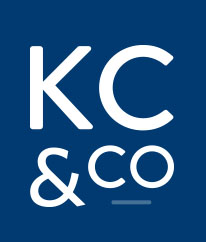Wildfires burning since Aug. 8 on Hawaii’s Maui Island will likely result in the second-largest insured loss in the state’s history, according to a brief from catastrophe modeling firm Karen Clark & Company (KCC).
As of Aug. 11, the Lahaina fire had burned nearly 2,200 acres, with an estimated 2,207 structures damaged or destroyed. It has also claimed 93 lives, making the blaze the deadliest wildfire in more than a century. Many more people remain unaccounted for, and a reported 4,500 residents have been displaced by the rapid spread of the wildfire.
Catastrophe modelers attributed the fast-moving wildfire to dry conditions, low humidity, and 60-mph winds. Maui has had below average precipitation this spring and summer and high winds created by Hurricane Dora as it passed to the south of Hawaii contributed to the fire’s speed. The event took officials and emergency responders by surprise, with criticism over reports that sirens did not sound in the town of Lahaina.
According to KCC, official reports may underestimate the property damage; approximately 3,500 structures fall within the perimeter of the fire. The insured loss totals will be second only to Hurricane Iniki, an intense tropical cyclone that struck the island of Kaua’i on Sept. 11, 1992, and caused about $1.6 billion in insured losses.
“There have been two wildfires in the past 20 years that started within 10 miles of the Lahaina fire: the Olowalu fire in 2007 resulted in 2,500 acres burned, and the Maalaea Fire in 2016 burned 6,000 acres. Fires in Hawaii tend to break out in large grasslands on the dry sides of the islands; in Maui, the drier sides are the leeward areas to the west and south,” said KCC in its brief.
Modeling firm CoreLogic estimated about 3,088 residential properties in the fire perimeter with a total reconstruction value of $1.3 billion.
“Note, not all properties within the perimeters sustained damage. A structure that was damaged may not have sustained 100% loss up to the full reconstruction value. The number of damaged properties will be a subset of the total 3,088 homes,” Jon Schneyer, CoreLogic’s director of catastrophe response, said in an Aug. 10 blog post.
The high percentage of wood structures also may have contributed to the wildfire spread, according to CoreLogic.
“The source and ignition of the fire are still undetermined, but once the fire moved into the more developed regions of Lahaina, it appears the fire was able to intensify and spread very quickly,” said Dr. Thomas Jeffery, CoreLogic’s principal wildfire scientist. “The winds likely pushed embers and flames into the built environment, and then the buildings in Lahaina became the primary source of fuel for the expansion of the fire. Many of the residential properties in Lahaina appear to have wood siding, and a number of them have elevated porches with a lattice underneath. Both are characteristics that make the residence very vulnerable to either ember or direct flame ignition.”
According to data from AM Best, State Farm has the highest market share for homeowners insurance in the state followed by Tokio Marine, Allstate, USAA, and Liberty Mutual. For personal auto, the top insurers are Berkshire Hathaway (parent company of GEICO), State Farm, USAA, Allstate, and Progressive. Allianz has a 23% market share of the commercial property market in Hawaii, followed by DB Insurance, Tokio Marine, MS&AD, and American International Group (AIG).
Economic losses from the blaze could be far higher – the University of Hawaii’s Pacific Disaster Center (PDC) and the Federal Emergency Management Agency (FEMA) estimated it could cost over $5.5 billion to rebuild. The 2,207 damaged or destroyed structures include 80% residential and 9% commercial, per the PDC.













